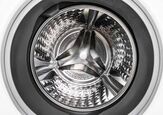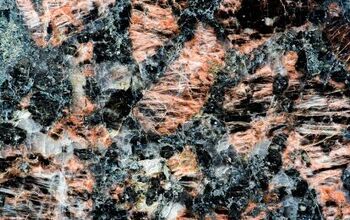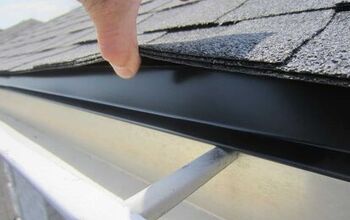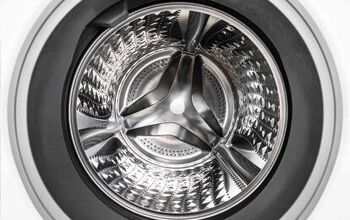14 Ways To Help Get Rid Of Window Condensation For Good

Windows can fog up seemingly out of nowhere and in an instant. Even when there’s a clear sky, you can have water droplets dripping down your window panes. While this might not seem like a big deal, it can become annoying over time, and force you to do more cleaning and wiping than you’d like. If your home’s windows constantly have condensation on them, you’ll want to find a permanent solution to this problem.
To get rid of window condensation in your home, you need to reduce the indoor humidity. Consider investing in a dehumidifier to lower humidity, and use your bathroom and kitchen exhaust fans. Take shorter showers and close the door while showering. Open the curtains, allow direct sunlight in, and ensure air is circulating. Install double-glazed windows and ensure you have adequate insulation.
Windows exist so you can admire the view and to let in the daylight, they aren’t there for you to watch beads of water dripping down the glass. Window condensation can happen in just about any climate, and for all sorts of reasons. If you are sick of having fogged up windows, keep reading. Below is a list of all the best ways to get rid of window condensation in your home for good.
14 Ways To Help Get Rid Of Window Condensation In The Home
1. Invest In A Dehumidifier
One of the most effective ways to permanently get rid of window condensation in your home is to use a dehumidifier. A dehumidifier has many uses, but its primary function is to lower the moisture level in your home.
Since window condensation is usually caused by wet air in the home, a dehumidifier removes the cause of foggy windows. Keep your dehumidifier running whenever you notice condensation, and keep it in the area where you notice water most often collecting on windows.
2. Use Your Exhaust Fans
Even if your home isn’t equipped with a state of the art HVAC system, it probably has one or two exhaust fans. These fans are most commonly found in the kitchen and bathroom. Whenever you notice condensation, turn on your exhaust fans. They will help suck out the wet air.
Furthermore, you can use these fans in a preventative manner. Use your bathroom exhaust fan when showering and using hot water. Turn on your kitchen fan whenever you cook, especially when boiling water for prolonged periods.
3. Turn Down Your Humidifier
If you suffer from dry skin or have other troubles with dry air, then you might use a humidifier. A humidifier can have many health benefits, but if you notice condensation on your windows, then you should probably turn it down.
Most humidifiers have many settings. If there’s condensation, your home is probably plenty moist, so a lower setting should help with the condensation, but not make dry skin worse.
4. Let More Sunlight In
One natural way to eliminate condensation is to allow more direct sunlight to hit your windows. While you can’t control the sunlight, you can often control obstacles that are blocking sunlight. Keep your hedges and outdoor shrubs trimmed, and below the line of the window.
This will allow you to enjoy the view, increase your home’s curb appeal, and also increase the amount of direct sunlight that hits your windows. The more direct light your windows get, the less condensation you’ll see.
5. Take Shorter Showers And Keep Door Closed
One of the main contributors to window condensation, particularly in the winter months, are long and hot showers. The steam from a hot shower can quickly translate into wet windows throughout the home.
To help mitigate this increased humidity and mist in the home, keep the door closed when showering. Remember to turn on the bathroom exhaust or open a window when showering. As a rule, don’t close the window or turn off the fan until the bathroom mirror is no longer foggy.
6. Add Houseplants
Houseplants have tons of benefits. They add oxygen to the air, remove toxins, and add bright pops of natural color to the home. They can also suck up excess moisture from the air. If you notice condensation near certain windows, add a houseplant in this area.
Some plants are better than others at absorbing moisture, and some houseplants crave humidity. Succulents, air plants, ferns, and orchids all love wet air, but most plants can help reduce humidity levels.
7. Add Product To Your Windows To Keep Them Clear
If you want to attack the window condensation problem head-on, then consider adding a product to the window glass that reduces condensation. There are several products on the market, with Rain-X being the most popular.
These products were originally designed for automobiles, but many homeowners have found they help reduce foggy windows in the home as well. When using these types of products, it’s crucial you follow the instructions exactly when applying it to windows.
8. Open Windows More Often
One simple way to reduce the risk of condensation in the home is to let in some fresh air. When you open your windows, you make the humidity outside the same as the humidity inside. This often helps reduce condensation, unless it’s raining outside.
Open up several windows, as this will get a good airflow into the home. It shouldn’t take long before you start noticing results.
9. Ensure You Have Adequate Insulation
Sometimes, moisture creeps into the home because you don’t have good insulation. Window condensation can occur when your windows and the areas around your windows aren’t well insulated.
Ensure your home has adequate insulation, as condensation can be a red flag that your home’s lacking adequate insulation.
10. Install Double-Glazed Windows
One great way to improve insulation in your home and decrease condensation is to install double-glazed windows. Double-glazed windows add an extra layer of protection between the outside and your home.
These windows can be costly to install, but it’s an investment that will pay off over time. You will likely need to use less energy to heat and cool your home with these windows, especially if you are upgrading from old single-glazed windows.
11. Improve Air Circulation With Fans
Oftentimes, condensation occurs because there isn’t enough air circulating in your home. When air is constantly moving, it is less likely to condense. Stagnant and moist air is what you find on windows fogging up your view.
Use ceiling fans and oscillating fans to increase the airflow in your home, and in turn, reduce the condensation on your windows.
12. Open Your Curtains
In addition to using fans, you should open up your curtains and drapes when you notice condensation. Some types of curtains not only block sunlight, they also trap air. This trapped air won’t circulate like the rest of the air in your home, and in turn, it can create condensation on the windows more easily.
Open your windows, especially during the day to reduce the risk of moisture collecting on the glass.
13. Install An Outdoor Clothesline
If you like to air-dry your clothes, but do so indoors, this can contribute to high humidity levels and foggy windows. You don’t need to stop air-drying your clothes, but if you want to reduce condensation in the home, consider drying clothing outdoors.
Usually, clothes dry faster outside, and it’s very easy to build your own clothesline. Try to coordinate your laundry with sunny days, and you’ll find this transition to outdoor drying to be a great decision.
14. Use Your Air Conditioner
Air conditioners don’t just cool down your home, they also decrease humidity. As the machine cools the air, it also sucks out moisture. Many modern air conditioners even have a dry setting. This essentially turns your air conditioner into a makeshift dehumidifier.
If you don’t have a dehumidifier, use your air conditioner to suck out the extra moisture in your home. It will make your home more comfortable, and will help reduce the risk of window condensation in the home.
Final Notes On Stopping Window Condensation In The Home
Windows should show beautiful views in the distance, and not be filled with dripping water. Window condensation can happen in any household, and if it’s happening frequently in yours, you should do all you can to stop this problem. The best way to reduce window condensation is to remove humidity from the home by using a dehumidifier, exhaust fans, or opening up your windows. Circulate air with fans, and open curtains to prevent trapped air. You can even incorporate houseplants that remove moisture from the air.
Related Guides:
- How To Remove Moisture Between Window Panes With A Hair Dryer
- Why Is My Basement So Humid?
- How To Prevent Mold After A Flood

Tom Gaffey is an expert writer who currently resides in Washington D.C. Tom has a passion for real estate and home improvement writing, as well as travel and lifestyle writing. He lived the last twelve years in Hawaii where he worked closely with luxury resorts and event planners, mastering his knowledge of aesthetics and luxury products. This is where he found his passion for home improvement and a keen interest in DIY projects. Currently, Tom resides in Washington D.C, and also working on his debut fiction novel.
More by Tom Gaffey










![How Much Weight Can a 4×4 Support Horizontally? [It Depends!]](https://cdn-fastly.upgradedhome.com/media/2023/07/31/9070333/how-much-weight-can-a-44-support-horizontally-it-depends.jpg?size=350x220)
















